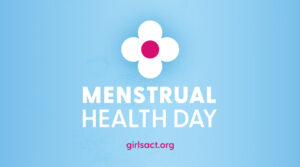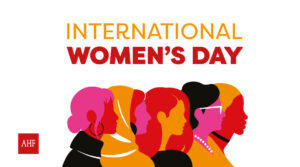HIV pre-exposure prophylaxis, better known as PrEP, is the treatment capable of preventing infection by this virus, and is an increasingly accepted strategy to reduce transmission in vulnerable people. However, one population that is highly vulnerable, but has not done well in PrEP research, is cisgender women. That could change with injectable treatment, according to new research.
This is an analysis derived from the HPTN 084 study, which is designed to assess the efficacy and safety of injectable PrEP in heterosexual women and will last at least four years.
Women, a special population
As reported by the Aidsmap.com website, which specializes in information on HIV, when it comes to this virus, heterosexual people, women are often at a disadvantage compared to men. Globally, they are more likely to have HIV and acquire it at a younger age; biologically and socially they are more vulnerable; and drug prevention studies have often yielded worse results for them.
However, the study in question, which was presented in February at the 30th Conference on Retroviruses and Opportunistic Infections (CROI), found remarkable efficacy of injections of the drug cabotegravir used as PrEP in cisgender women.
In addition, drug levels were found to persist long enough in women that an injection every three months, rather than every two months as in the HPTN 084 study, may be effective.
In addition to being more convenient, quarterly dosing would mean PrEP injections could be given on the same schedule as injectable contraceptives. This would make the dynamics of perseverance and monitoring of women easier.
They headed in the right direction
Mark Marzinke, MD, of Johns Hopkins University, and his colleague, Jessica Fogel, MD, conducted an analysis of drug levels in women participating in the HPTN 084 study who were late on their injection dates. , resulting in longer gaps between them than scheduled.
Since the first two injections are given one month apart rather than two months apart (to achieve “steady state” drug levels), a significantly delayed second injection was defined as one given four to six weeks apart late, that is, eight to ten weeks after the first.
After this initial period, injections are scheduled every eight weeks. The authors grouped them into injections that were given 4 to 6 weeks late (i.e., 12-14 weeks after the last injection), 6 to 8 weeks late, and 8 to 10 weeks late (16-18 weeks or more after the last injection), indicating a completely missed injection).
In total there were 224 cases of delayed injections in 194 women (some had more than one delayed injection) among the more than 1,600 women who received cabotegravir in the study.
In women whose second injection was delayed, in 91% of them the drug level was maintained at more than eight times the 90% inhibitory concentration (i.e., the drug concentration sufficient to reduce drug replication by 90%). HIV, known as IC90). In 100% of the women, the level was maintained at more than four times the IC90.
Prolonged protection
In women whose injections were delayed, 98% had levels above four times the IC90 if the injection was delayed by 4 to 6 weeks, 95% if the injection was delayed by 6 to 8 weeks, and 90% if the injection was delayed by 4 to 6 weeks eight to ten weeks. The proportion with more than eight times the CI90 was 87%, 84% and 62%, respectively.
This would indicate that the vast majority of women would still have protective drug levels after a delay of up to six weeks, that is, up to 14 weeks after their last injection, indicating that one dose every 12 weeks should be sufficient to maintain the efficacy of the treatment.
So far, only one woman in the HPTN 084 study who received cabotegravir acquired HIV despite receiving the treatment. This case is important because this woman always maintained levels above the IC90, even at the follow-up appointment in which she tested positive for HIV. Undoubtedly, this will be a fact to take into account for the research team.
Prevention in all forms
PrEP is a preventive treatment option for those who cannot negotiate condom use, such as many women living in situations of violence, or for those who for any other reason do not use condoms in their sexual life.
While research on these drugs continues, if you have the opportunity, incorporate condoms into your sexual activity and protect yourself not only from HIV, but also from other sexually transmitted infections that can affect your health. At AHF Latin America and the Caribbean we have free condoms for you, free HIV tests and linkage to treatment if you live with HIV. Locate our offices in your country and make an appointment now.






